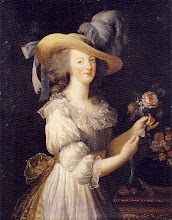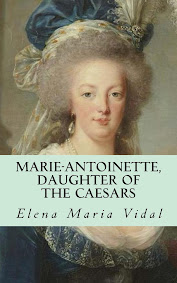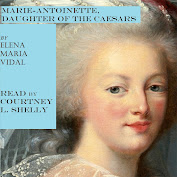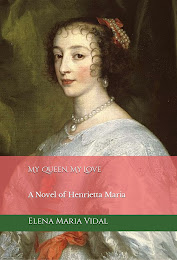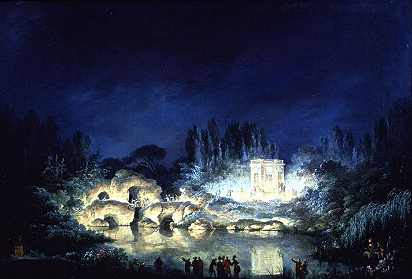
Much has been made of the letters Marie-Antoinette wrote to her friend Count Esterhazy, and the ring which she sent to Fersen via Esterhazy. In August 1791, after the failure of the escape to Montmedy, the royal couple were isolated and cut off from news about relatives and friends since Fersen, the principle channel for conveying the news, had been silent for almost two months. The Swedish count was in Vienna at King Gustavus’ request on a secret mission, consulting with the Emperor about the possible rescue of the French royal family. The queen wrote to Esterhazy: "If you write to him (Fersen) be sure to tell him that many leagues and many countries can never separate hearts: I feel this truth more everyday.” In September 1791, the queen sent Esterahzy two gold rings which, according to Webster, bore the motto:
Domine, salve fac regem et regina. (God save the king and the queen.) Other authors say the motto was
Lâche qui les abandonne. (Coward be the one who lets them down
.) She wrote:
I am delighted to find this opportunity to send you a little ring which will surely give you pleasure. They have been sold in prodigious quantities during the last three days and one has all the difficulty in the world to find them. The one surrounded with paper is for him (Fersen),
it will just fit him; I wore it for two days before packing it. Tell him it is from me. I do not know where he is; it is a dreadful torment to have no news and not even know where the people one is fond of (qu’on aime)
are living.Of course, a ring once worn by a queen is of great value, just like a cap once worn by the Pope. Nesta Webster’s commentary on the rings and letters must be quoted in its entirety:
These letters have again been quoted as evidence that there was a liaison between Marie-Antoinette and Fersen, and that Esterhazy being in the secret, the Queen did not hesitate to confide in him on the subject. But in reality, what do they prove? Nothing more than that she had great affection him. That a captive Queen should send royalist rings to two of her oldest and most faithful friends is nothing extraordinary, that she should have referred to Fersen as “him” was only in accordance with the plan of avoiding all names in writing. As to the words “qu’on aime,” aimer is a verb that in French…may mean either to like, to be fond of, to love with affection or to be in love with. It cannot have been in the last sense that Marie Antoinette employed it here, since she applies it in the plural - - “les gens qu’on aime”—that is to say, her friends in general….If she had used it in the amorous sense of one whom Esterhazy knew to be her lover, would she not have said, “celui qu’on aime?” (Nesta Webster
, Louis XVI and Marie Antoinette during the Revolution)
There is much controversy over a certain night in February 1792, when some biographers, including Stanley Loomis and Vincent Cronin, think that Marie-Antoinette and Count Axel von Fersen may have finally consummated their love in her suite in the Tuileries palace. This theory has occurred over an erased phrase in Fersen’s diary. However, no one knows for certain if the erased phrase was indeed
Resté là, Fersen’s usual term indicating that he had slept with a lady. Also, the queen, following her escape attempt, was more closely guarded than ever, with a sentry keeping watch at her door all night, and checking every once in awhile to see if she was in her room – how could she have entertained a lover? The purpose of Count Fersen’s final visit to his friends Louis XVI and Marie-Antoinette was to discuss the dire political situation and persuade them to try to escape again, which Louis would not do. Fersen may have had to linger in the palace overnight in order to avoid the revolutionary authorities, but not in the queen’s bed. At his earliest convenience, he made his way to the welcoming arms of his mistress Eleonore Sullivan and stayed at her house in the attic hideaway.
According to the queen’s maid Madame Campan, the queen spent her nights at the Tuileries reading in order to calm her agitated mind. Madame Campan also writes in her Memoirs of how the queen found a confessor who had not taken the constitutional oath, whom she would secretly receive. For Easter of 1792, she would not make her Easter duty in public but arranged to hear Mass privately with a non-juring priest. As Madame relates:
The Queen did perform her Easter devotions in 1792; but she went to the chapel attended only by myself. She desired me beforehand to request one of my relations, who was her chaplain, to celebrate a mass for her at five o’clock in the morning. It was still dark; she gave me her arm and I lighted her with a taper. I left her alone at the chapel door. She did not return to her room until the dawn of day.
So instead of liaisons with a lover, Marie-Antoinette was at that season of her life preparing her soul for the sufferings and death which lay ahead, of which her keen sense of the escalating events gave her a strong premonition. Nevertheless, descriptions of the queen’s religious faith by Madame Campan are often interpreted by some authors as an attempt to win the favor of the queen’s daughter, the Duchesse d’Angouleme. Yet it is acceptable to draw conclusions as if from the air, when it comes to non-existent evidence of Fersen’s alleged romance with the anguished queen. I see no reason why Madame Campan would have fabricated such events, which are similar to other reports of the queen’s religious beliefs and practices, especially her own final testament. Furthermore, at the Tuileries, as at Versailles, a private passage linked the queen’s room to her husband’s. According to Madame de Tourzel, the royal governess, in her Memoirs, one of the first things the queen did after being forcibly dragged to the Tuileries was to have a private staircase constructed between her room and the King’s. It would not be very convenient to dally with a lover when a husband might walk in at any moment from behind the hidden door in the paneling.
The psychology of Count Fersen in his later years must also be taken into account. He was proud of his daring and initiative which had intially delivered Louis XVI, Marie-Antoinette and their family from the Tuileries in June, 1791. However, the failure of the royal family to escape to Montmedy he blamed on the fact that he had not accompanied them after they left Paris; he was haunted by the night of Varennes for the rest of his life. Indeed, he was murdered by a mob in Stockholm about twenty years later on the exact anniversary of the royal family’s escape, June 20. He saw his failure as not only costing the lives of his dear friends, but also for destroying what would have been the glory of his career, to have been the one responsible for the rescue of the French royal family. Webster and Kermina maintain that the count seemed to be always looking for signs that the queen had loved him. He pinned in his diary a scrap of a letter that
she had written to someone else, that was passed on to him after her death by Madame de Korff, the Russian lady whose passport Marie Antoinette had used in the foiled escape. The scrap contained the words:
Adieu, mon coeur est tout à vous, “Farewell, my heart is all yours.” The queen expressed herself in such a gushing style to all of her friends and family and although the words were in her handwriting there is no indication to whom it was written. There is evidence, however, that Fersen transcribed known letters of the queen into his journal, and at least in one case altering the original text to make it more personal. He claimed that the queen had once used his seal with the motto:
Tutto a te mi guida. “Everything leads me to thee.” Webster claims that she had also used the seal of the monarchist Quintin Crauford in her correspondence – using other people’s seals was a subterfuge employed in sensitive diplomatic correspondence, but Fersen thought the words were meant as a message for himself. As Webster says, “everything could certainly not be guiding her to Fersen when she was imprisoned in the Temple and had just refused Jarjayes' plan of escape, saying she could have no happiness apart from her children and therefore she abandoned the idea without even feeling any regret.”
A phrase from the Queen’s final letter of October 16, 1793, written a few hours before her death to her sister-in-law Madame Elisabeth, has often been interpreted as referring to Fersen. “I had friends. The idea of being separated for ever from them and their troubles forms one of my greatest regrets in dying. Let them know that up to my last moment I was thinking of them….” While the count was probably included among the “friends,” it is more likely that the queen was thinking specifically of the Polignac family. Marie-Antoinette had often referred to the Duchesse de Polignac as her “dear heart,” and had entrusted her children to her care. The two families had been close, with Louis XVI writing to Madame de Polignac and confiding in her, and they had been raising their children together. Marie-Antoinette had a great capacity for friendship, and the persistence of authors in interpreting her friendly interactions in terms of sex and romance is to obscure what was a beautiful aspect of her personality in itself. As she wrote to Elisabeth of her children: “Let them learn from our example how much the consolation of our affection brought us in the midst of our unhappiness and how happiness is doubled when one can share it with a friend—and where can one find a more loving and truer friend than in one’s own family?”
For in those last days of Marie-Antoinette it is vital to understand her as a mother who had been violently separated from her children. They were the chief subject of her thoughts, and while she showed indifference to her own fate, the mention of them would reduce her to tears. She was in anguish over her eight year old son, as would any parent whose child had been torn from their arms. Not only was she, like any mother, concerned for his diet and hygiene while in the hands of his captors, but she knew that they were beating him, giving him alcohol, teaching him lewd songs, and subjecting him to other forms of unspeakable abuse. Any mother would almost lose her mind; as for the queen, she only wanted to survive and so someday be united with her son and put her arms around him. What parent would not be tormented if a beloved child was ill in the hospital and they could not be at his side? And yet, in a recently published novel about the queen, I was sickened when the author with extreme mawkishness portrayed the desperate Marie-Antoinette wrapped up in Fersen fantasies while in prison. Such sentimentality and romanticism is obscene, considering the actual bitter and tragic circumstances, expressed by the queen herself to Elisabeth in her last letter: “I embrace you with all my heart, together with those poor dear children. My God! What agony it is to leave them forever! Adieu! Adieu! I shall henceforth pay attention to nothing but my spiritual duties.”
Share
 Marie-Thérèse-Charlotte de France, Madame Royale, known after her marriage as the Duchesse d'Angoulême, led a life so haunted by rumor that even today many confuse fact with fiction. The legend of Sophie Batta, the "Dark Countess," is even now put forth by many. It is not a new story, and was circulating during the Restoration. The legend claims that the real princess was switched with another girl and lived in Germany, wearing a green veil, while the "Duchesse d'Angoulême" was an imposter. People could not understand how the sad, nervous, tense woman, prone to fainting spells, could be the daughter of the beautiful, charming, vivacious Marie-Antoinette. There was not the same understanding of post-traumatic stress syndrome as there is now, or survivor's guilt, common to those who are the sole survivors of a family disaster.
Marie-Thérèse-Charlotte de France, Madame Royale, known after her marriage as the Duchesse d'Angoulême, led a life so haunted by rumor that even today many confuse fact with fiction. The legend of Sophie Batta, the "Dark Countess," is even now put forth by many. It is not a new story, and was circulating during the Restoration. The legend claims that the real princess was switched with another girl and lived in Germany, wearing a green veil, while the "Duchesse d'Angoulême" was an imposter. People could not understand how the sad, nervous, tense woman, prone to fainting spells, could be the daughter of the beautiful, charming, vivacious Marie-Antoinette. There was not the same understanding of post-traumatic stress syndrome as there is now, or survivor's guilt, common to those who are the sole survivors of a family disaster.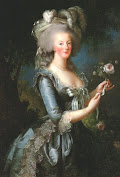
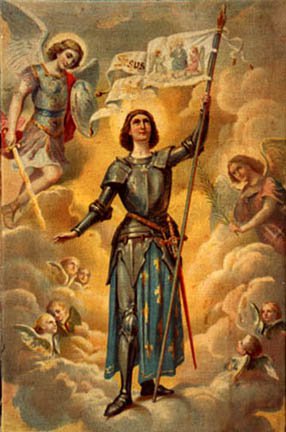
























 (To be continued….)
(To be continued….)









